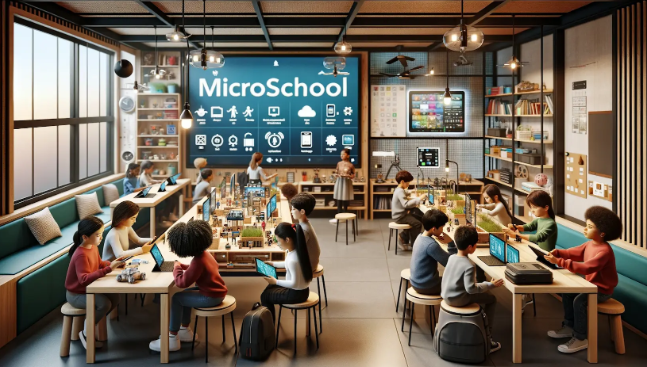Microschools: A Personalized Approach to Education (GS Paper 3, Education)

Introduction
- Microschools have become increasingly popular in the United States and the United Kingdom, particularly during the COVID-19 pandemic.
- These small private schools offer a more personalized educational experience by maintaining smaller class sizes compared to traditional schools.
- This educational model allows for individualized attention and a tailored approach to student learning.
Educational Structure and Curriculum
- Typically, students in microschools are registered as homeschoolers within their states. Microschools operate most days of the week, with full-time teachers delivering structured lessons.
- They sometimes use assessments to monitor student progress.
- The educational approach is often flexible, focusing on individual student needs and incorporating various educational philosophies.
Funding Sources
- According to the National Microschooling Center, the majority of microschool funding (63%) comes from tuition fees paid by parents.
- Additionally, 32% of funding is sourced from state-funded school choice programs, which support diverse educational initiatives.
Start-Up and Operation
- Microschools are often initiated by educators seeking to provide an alternative to traditional schooling.
- These schools enjoy significant autonomy in designing their curricula, which may include unique perspectives on subjects such as the intersection of religion with science and history.
- It's important to note that microschools are not typically required to conduct safety or background checks on their staff.
- This flexibility allows microschools to blend elements of traditional schooling and homeschooling to meet individual student needs, though it raises concerns about oversight and accountability.
Characteristics
- Microschools usually enroll between 100 and 150 students, with class sizes ranging from 10 to 15 students.
- They employ multi-age groupings and focus on an emergent curriculum, allowing students to learn at their own pace rather than following a rigid grade-level progression.
- Instead of standard textbooks, microschools often use projects, discussions, and engaging activities.
- Many have maker spaces to foster creativity and demonstrate practical applications of theoretical concepts.
Learning Environment
- Microschools utilize shared classrooms where students typically meet twice a week for collaborative learning.
- They often implement a flipped classroom model, where students watch instructional videos at home and engage in hands-on group work in class.
- Digital tools are integral to the learning process, facilitating instruction, assessment, and creative activities.
- By combining elements of homeschooling and traditional schooling, microschools offer flexible, personalized learning environments tailored to the needs of families seeking individualized educational outcomes for their children.


